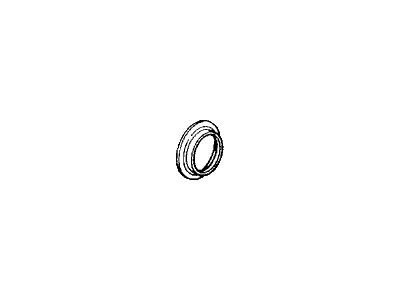×
- Live Chat
- 1-888-984-2011

My Garage
My Account
Cart
Genuine Honda CRX Wheel Seal
Wheel Axle Seal- Select Vehicle by Model
- Select Vehicle by VIN
Select Vehicle by Model
orMake
Model
Year
Select Vehicle by VIN
For the most accurate results, select vehicle by your VIN (Vehicle Identification Number).
1 Wheel Seal found
Honda CRX Wheel Seal
The Wheel Seal in the Honda CRX automobiles play a big part in protecting wheel bearing and the hub from some of the harsh operating conditions such as contamination by dirt, debris and rocks. In essence, it serves to seal to minimize the leakage of the lubricant as well as stop contaminants from penetrating the wheel bearing assembly whose damage is inevitable if the contaminants reach the place. The Wheel Seal requires lubrication so as to work optimally, without this, it is prone to heat up and turn into a hard object. Several types of Wheel Seals have been used in Honda CRX series of cars through the various model years, they include front inner and outer Wheel Seals as well as rear inner and outer Wheel Seals. These seals are available in the market from well-known firms including Motorcraft, Beck Arnley and Timken, and are made from high quality material and fits perfectly. The Wheel Seal should be inspected periodical for any traces of leakage or cracks in order to ensure the viability of the Honda CRX's Wheel Seal so as to prolong the lifespan of the wheel bearing.
In search of affordable OEM Honda CRX Wheel Seal? Consider browsing through our extensive inventory of genuine Honda CRX Wheel Seal. Not only do we provide market-leading prices and a manufacturer's warranty, but we also pride ourselves on exceptional customer service and swift delivery.
Honda CRX Wheel Seal Parts Questions & Experts Answers
- Q: How do you remove and install Wheel Seal on Honda CRX?A: To disassemble and access Gv and Gw Series transaxles, the first step is to lift the vehicle to a safe working height and properly support it. The next step is to take off the tire and wheel assembly as well as the splash shield. Remove the ball joint and the tie rod end, then swivel the steering knuckle in the required direction as much as you can. Remove the axle using an appropriate pry bar and use a tool to take out the leaking seal. While installing, it should be lubricated with oil and fitted squarely with the aid of a suitable fitting. Place the axle such that it fits into the transaxle while the spring clip fits in the Differential and it cannot be pulled out. Screw tighten the nut on the steering knuckle to the tie rod end with 33 ft. lbs. Ensure that the ball joint is disconnected from the lower arm side and that the nut is tight to the specified torque of 45 Nm before reconnecting the ball joint. At last, replace the tire and wheel assembly and then perform a road test using the vehicle to check for signs of leakage. To install L3 Series transaxles, the initial process involves lifting the vehicle and then detaching the tire and wheel assembly together with the wheel well splash shield. Take out the axle end nut and the damper fork bolt and then unfasten and pull off the ball joint from the lower arm. To remove the joint and pull the knuckle outward so that it separates the axle from the transaxle. For installation in the reverse application, lubricate the seal lip with oil and mesh the lip inward while placing a new spring clip on the opposite side of the axle. Slide the axle into the differential hole with the spring clip placed in such a manner that it cannot be pulled out easily. Again, connect the ball joint and tighten the nut to 40 ft. lbs. (55 Nm), and insert a new cotter pin. Replace the damper fork bolt with a new self-locking nut and tighten to a torque of 47 ft lbs. Torque the axle end nut to 65 Nm or 75 ft. lbs. or 134 ft. lbs. Replace the tyre/wheel assembly, and refill the transaxle to the recommended level, followed by performing a road test to observe any leakage.














